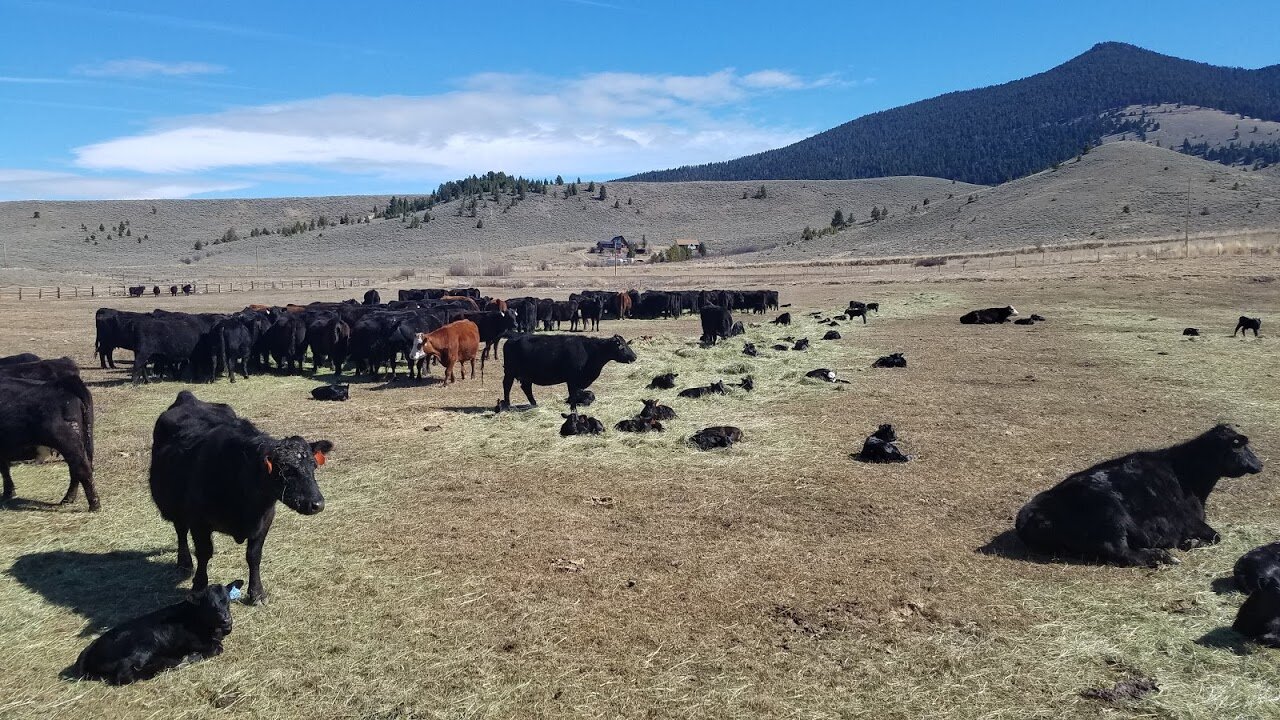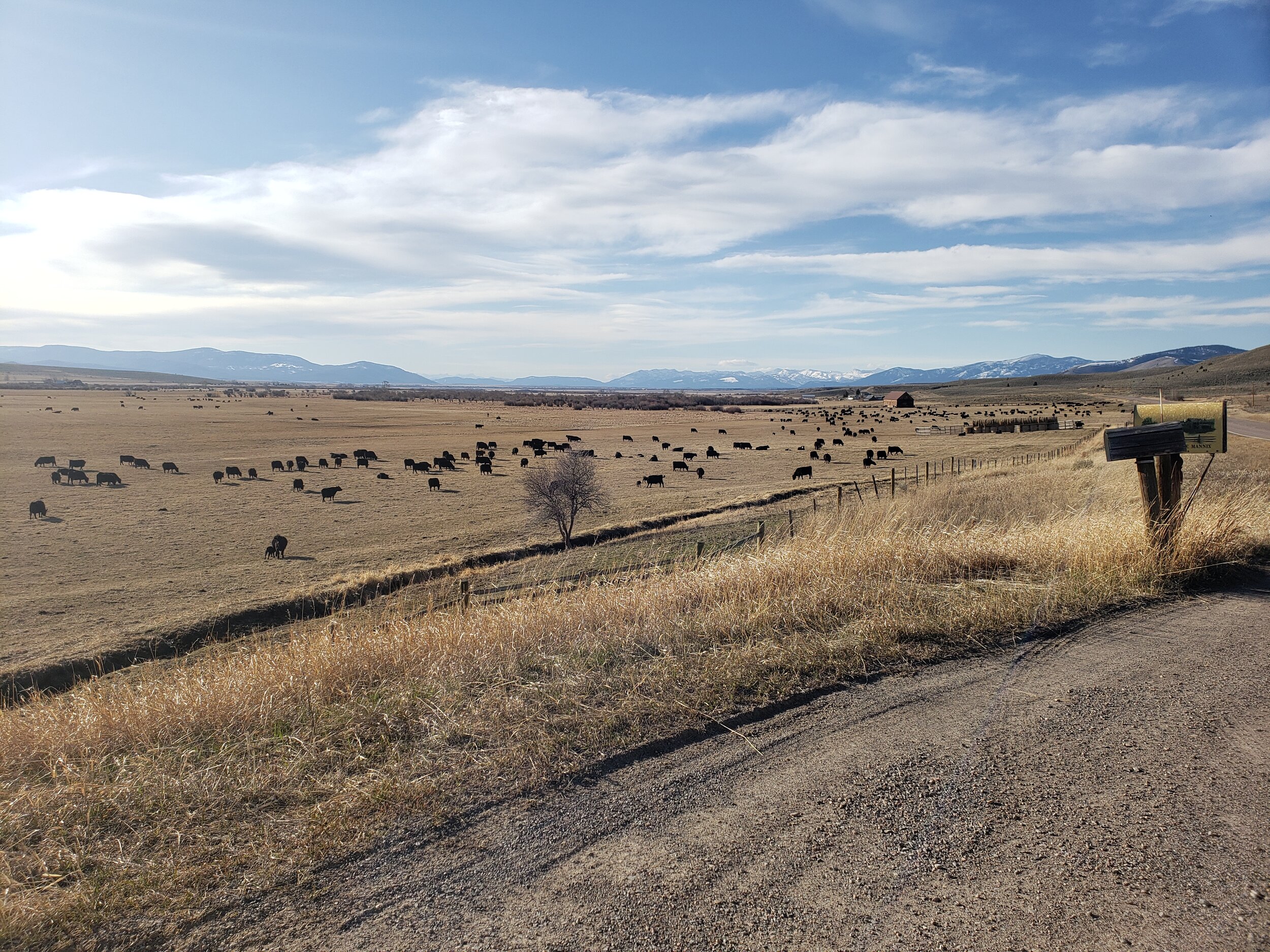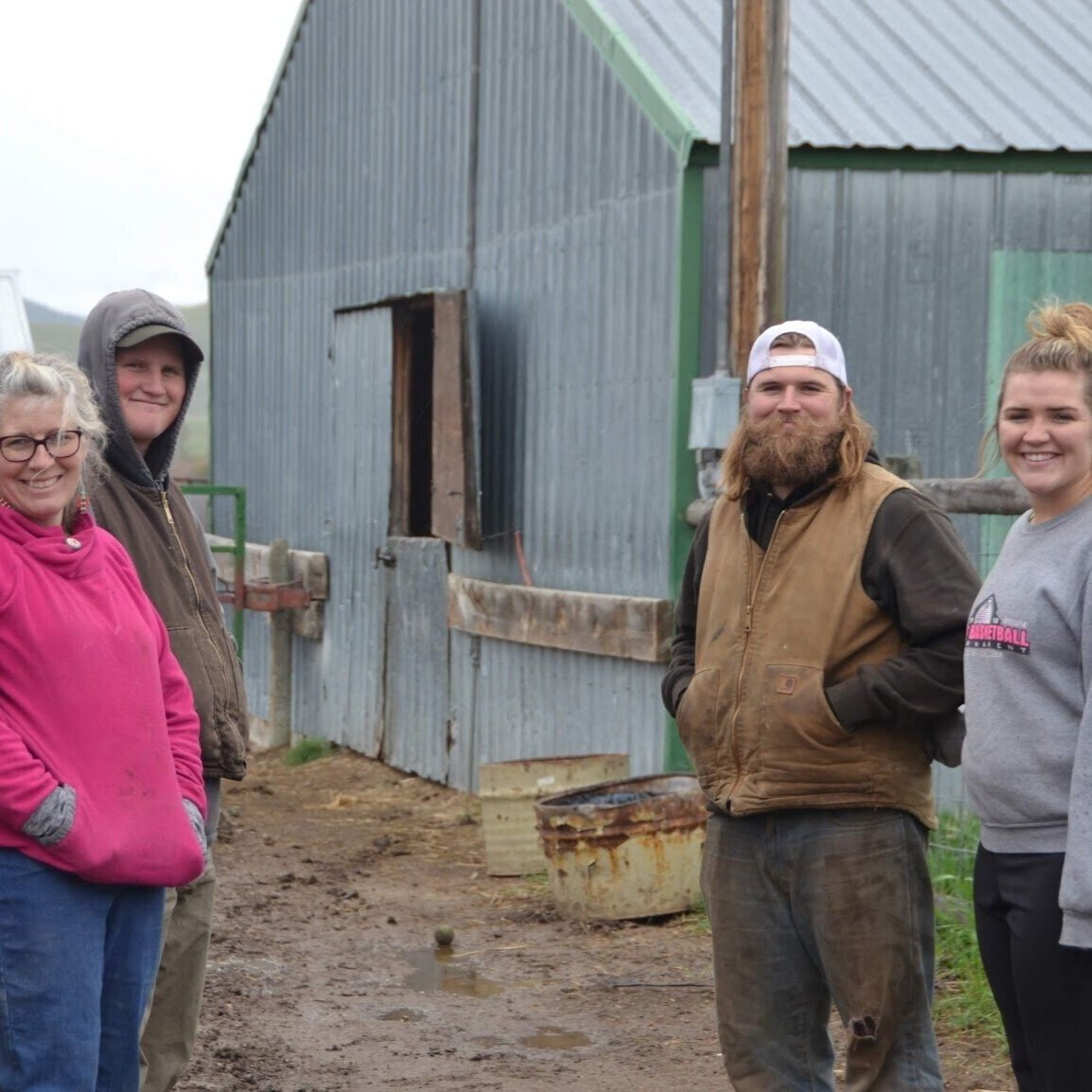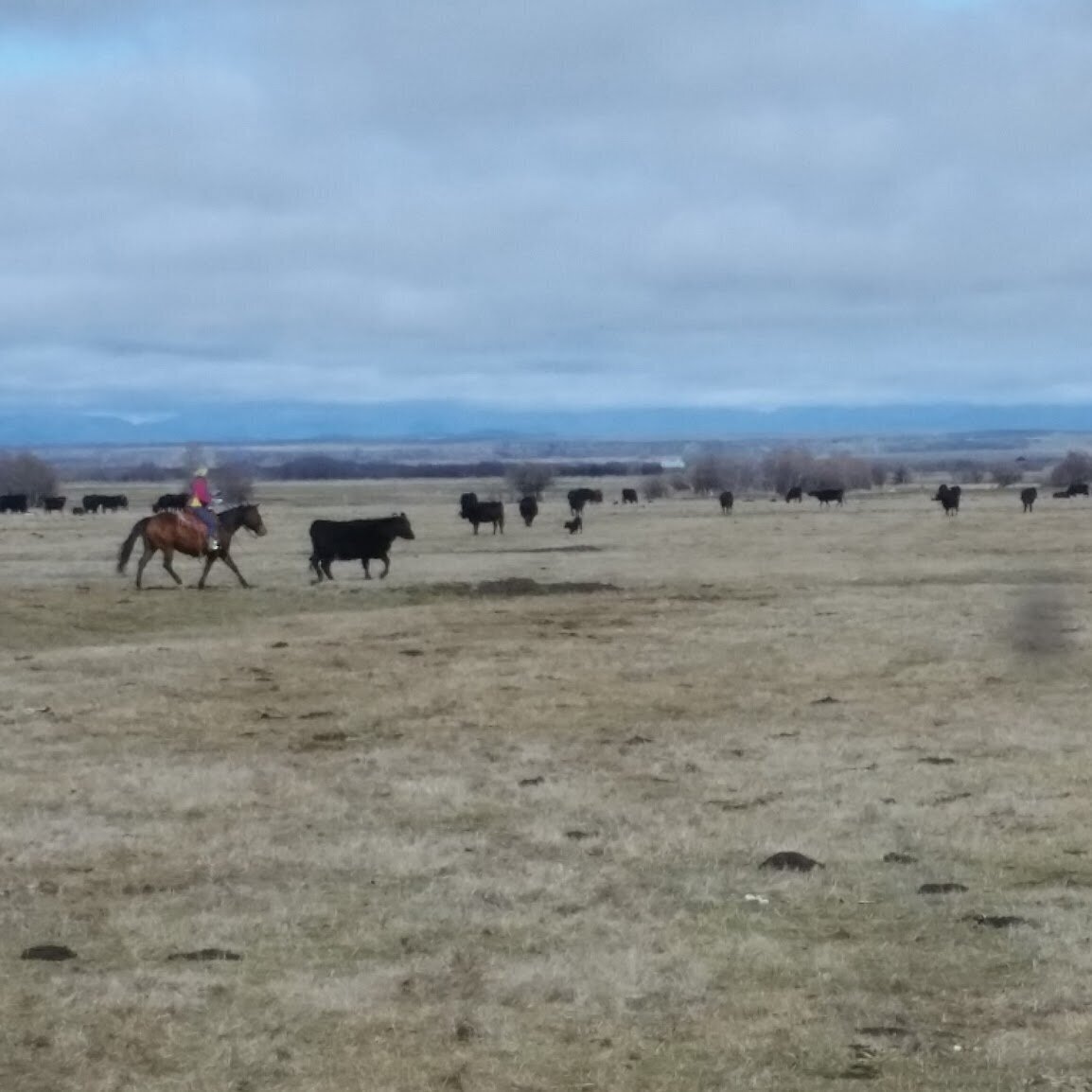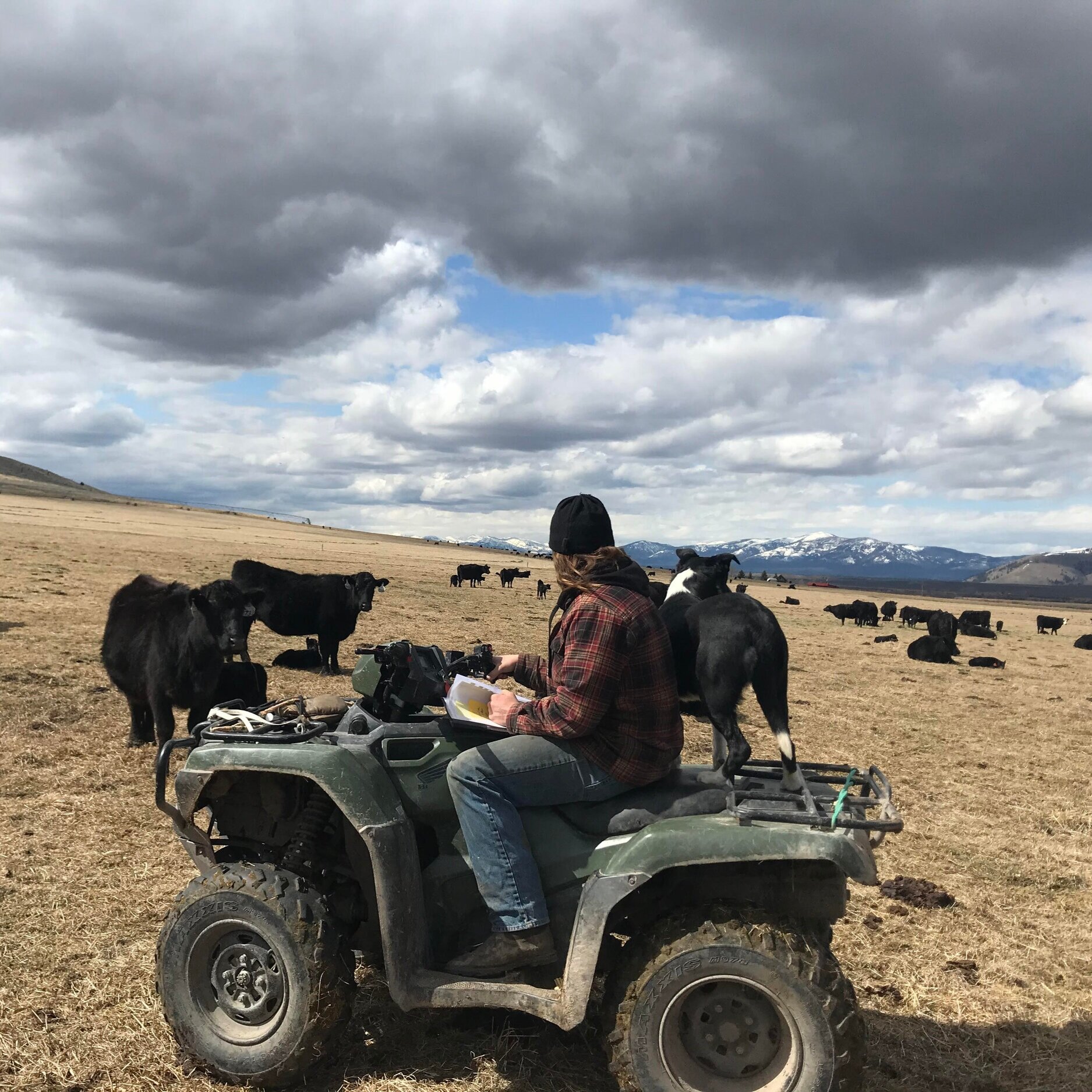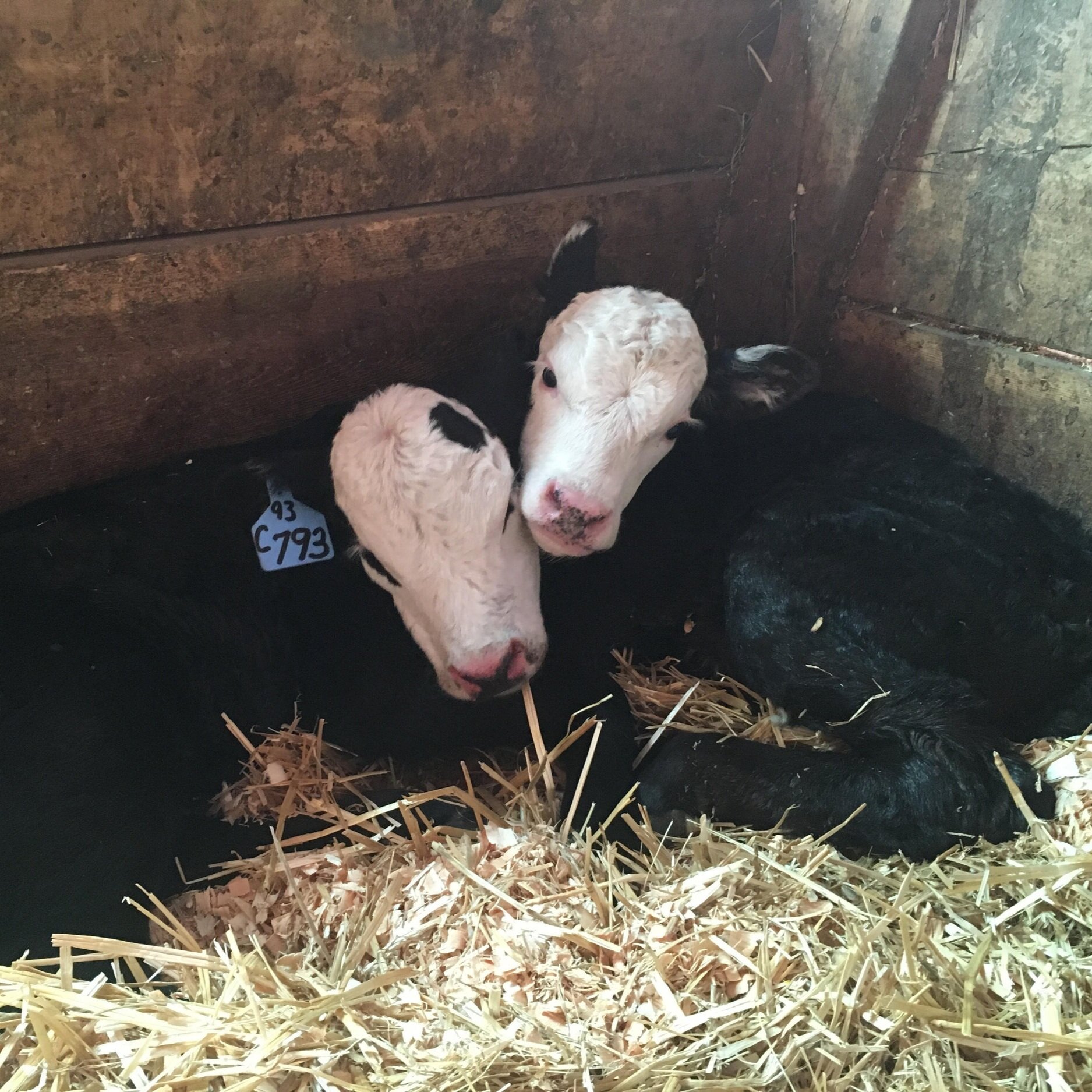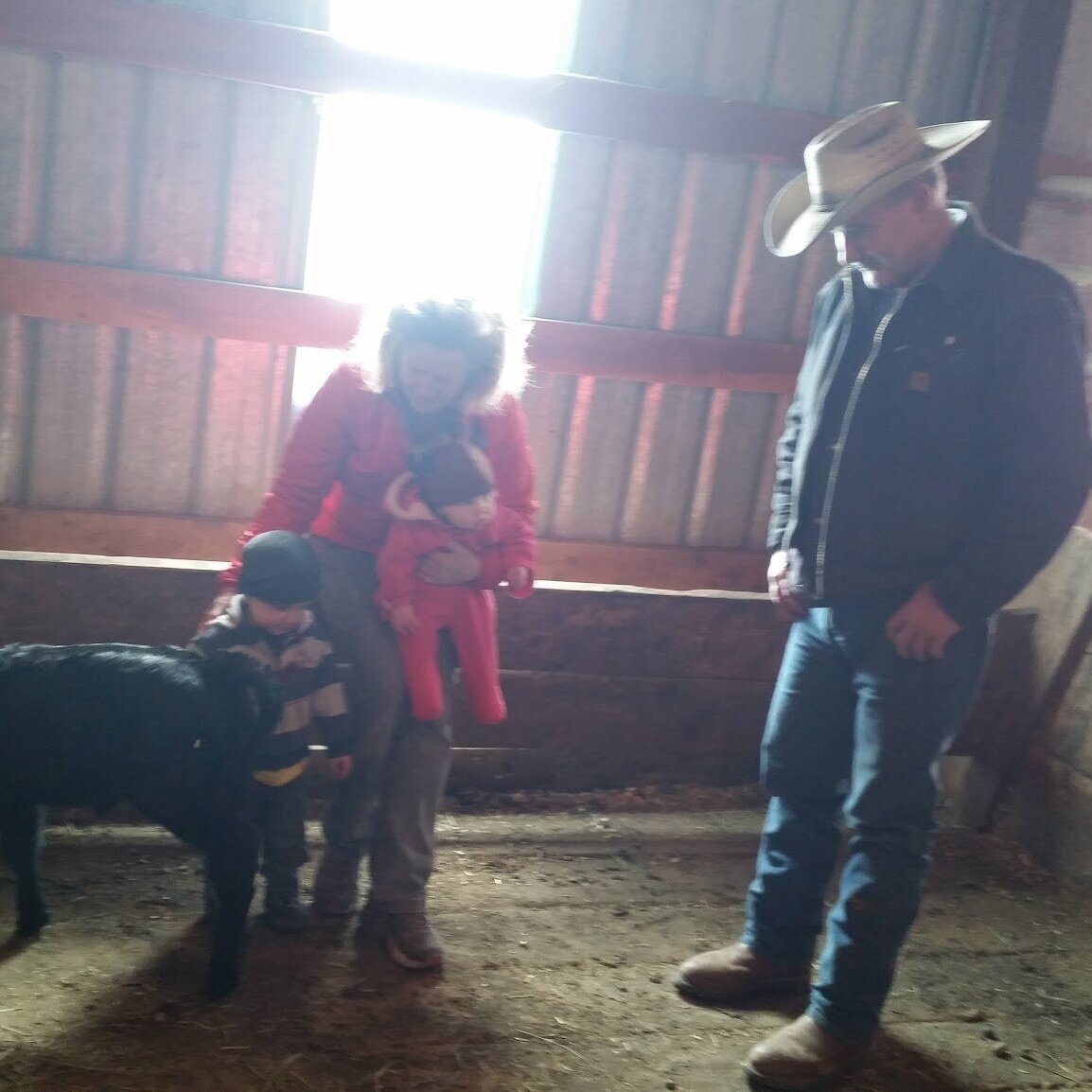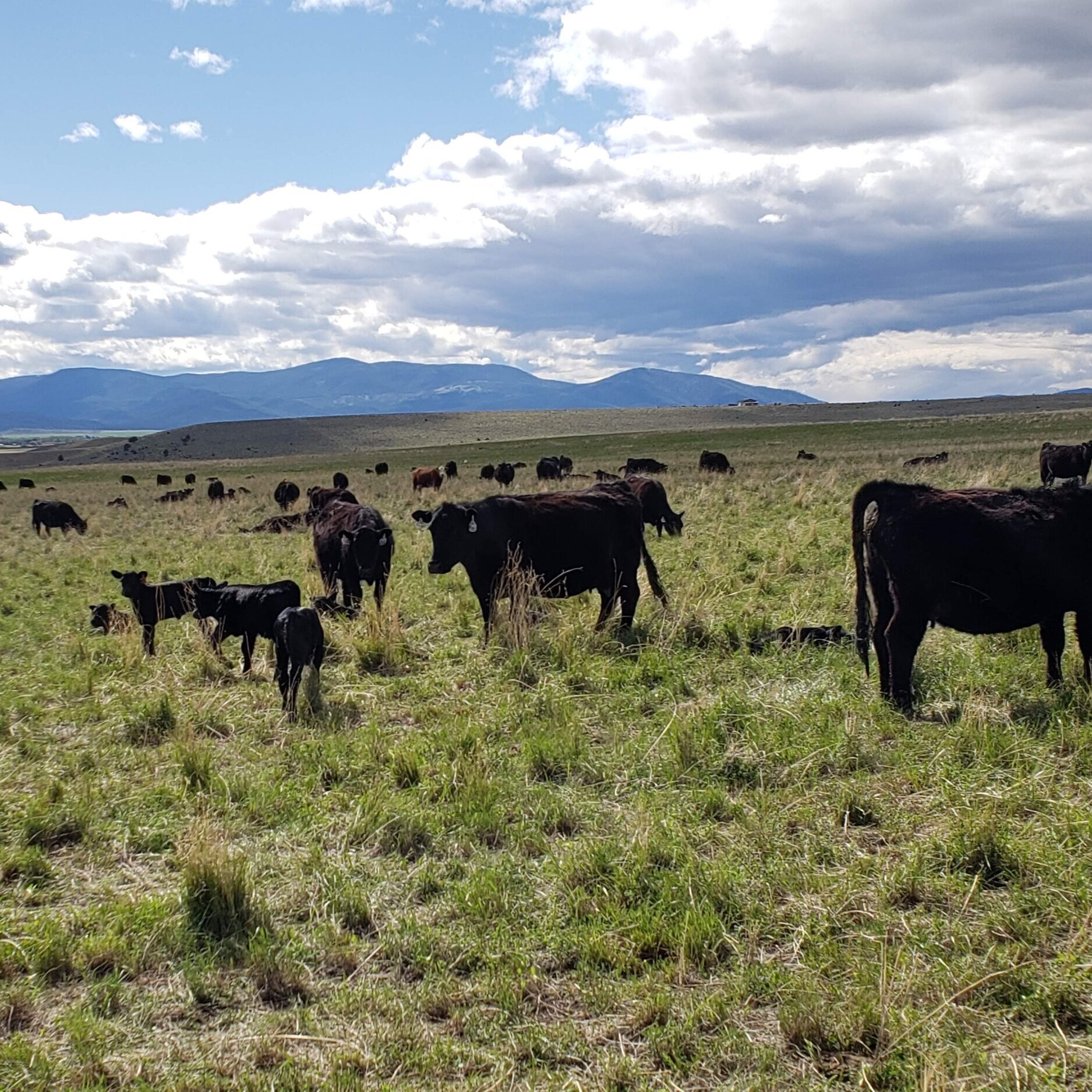Calving Season at the Mannix Ranch
There are few decisions that have as much impact on a ranching operation as selecting a calving date and system. In this post I want to share with you how we do it, and why, as well as some ways we may change it in the future.
Calving on the Mannix Ranch
Our calving due date is currently April 20th, but we will start getting calves one to two weeks earlier. We calve throughout April and into May, and have a late Calving group that continues to calve in May and June. We calve out on pasture, with a “Sandhills Calving System.” More on that below, but basically it means that the “heavies” or pregnant cow’s are moved every week or so to new pasture to calve on clean ground, while pairs (cows that have already calved) are left behind to separate the groups.
At the start of calving, cows are fed hay each day that was harvested on the ranch the previous summer, as the grass does not start growing enough to support them until a few weeks into May. The vast majority of cows calve and care for their newborn calves all on their own, but we drive through the “heavies” every few hours, checking for cows that may need help with the calving process, calves that haven’t sucked, or calves that are cold or sick.
If a storm comes through, the cows are moved to pastures that have the most access to shelter, and the calving crew goes into all hands on deck mode, with more frequent checks, night calvers checking on the animals during the night, etc.
Bryan Mannix Tags and Vaccinates a Heifer Calf, with Momma making sure everything is Ok.
Handling Calves
Each calf gets tagged with an ear tag matching his mother’s. (This helps us keep track of pairs through our multiple sorts and moves throughout the summer, and helps us make sure not to separate the pairs and wean a calf early. It also allows us to record a little bit of data about animals, especially if they later become replacements in our mother herd.) The calves also get a single shot of vaccine, and we band steer calves that we do not intend to keep as bulls.
The Sandhills Calving System
Another thing we do to improve the health of our herd is the Sandhills calving system.
In traditional systems, like we used in the past, pairs are sorted and moved out of the calving pasture after the mother’s calve, leaving the pregnant cows behind.
Instead, we now do the opposite and sort and move the pregnant cows away from the rest of the herd every 7-10 days. That means that the pregnant cows are always calving on relatively fresh clean pasture, and young calves are not exposed to older calves, keeping their pathogen loads lower, and hopefully leading to less sickness. It does lead to groups of cows spread all across our meadows in the spring, as you see in the photo below.
The “Heavies” or cows that haven’t calved, will soon be moved to the left across the electric fence, giving them access to fresh clean pasture to calve on with lower pathogen loads.
What about when there are issues?
While the vast majority of our cows calve on pasture with no assistance, we do still monitor them and assist when needed. If a cow has a distocia issue, such as a calf being backwards, breached, or having a leg back, we may have to assist the birthing process by getting the mother in, and maneuvering and pulling the calf. In cold weather or spring storms we move the “heavies” into pastures with the best shelter, and then check and monitor them closely. If a calve is born, cleaned off, and fed by his mother, they are usually fine. But if a Mom doesn’t attend well to her calf, or the calf doesn’t get anything to eat, they can get in trouble. When we spot these issues, we may bring the calf into the barn to warm up, or bottle feed them with some colostrum, which carries the same crucial nutrients as mother’s first milk. We then might pen that calf with his mother for a day or more, before turning them back out into the pasture. Sometimes mothers don’t claim their calves right away, and we then “jug” them together in a small pen until they are paired up. Finally, if a calf is sick and none of the above interventions is enough, we may need to doctor them with antibiotics, in which case we notch the ear of the calf and pull it out of our grass finishing program. None of the animals we market through our beef program receive antibiotics.
A Cow and her Calf temporarily “Jugged” in a small pen in the barn.
May and June Calvers on the “flat” South of the Scapegoat Wilderness.
May and June Calving
We leave our bulls out longer to get a higher number of our mother cows pregnant each year. As a result, calving is not over when the main group finishes in early May. We have a group of over 120 cows that get bred later, and will calve during May, June, and sometimes even early July. This group is turned out on pasture and calves on their own (We only check on them about once per week) Despite not getting much attention from us, we generally have nearly as good a survival rate with this group as our earlier calving group. The combination of older cows (we have no first calf heifers in this group), warmer weather, and calving on well drained dry land pasture makes calving issues even less common.
Selecting a calving date
Selecting a calving date had important consequences that cascade throughout the year.
Winter Calving
It is probably most common in our area for cattle operations to calve in the winter, in February and March. This system has plenty of advantages. Earlier calving leads to larger calves, and more lbs to sell in the fall. It works well for ranch labor, keeping employees busy during a slower time, and freeing them up to do more work in the busy spring and summer seasons. It also happens when some predators, such as Grizzlies, are not active.
However, it also means that calves are born in colder weather, with more potentially deadly storms. It requires cattle to be kept in closer to the ranch, with more shelter, where they can be monitored more closely, and checking on them day an night. This in turn means that the calving area is more congested, and often leads to higher pathogen loads and more sickness. Manure accumulates in calving areas rather than being spread across pastures. Also, because a Cow’s nutritional needs are highest just before and after calving, and they need to be in good condition to have a healthy calf, it forces producers to harvest and feed more hay. Cows can’t afford to lose weight in the winter, so less winter grazing is possible, and more and higher quality hay is required in February and March as Calving gets started.
Summer Calving
As mentioned above, summer calving may lead to lighter calves in the fall, but it has the advantage of reducing calving issues, disease, and labor required. Perhaps more importantly, calving in the summer when the grass is growing allows cows to graze longer in the winter, which leads to less need for hay, and in general an operation with less inputs.
So, why do we calve in April?
That’s a good question, with a lot of moving parts. For the most part we have bought into the idea of calving with natural cycles, and like the idea of calving when there is green grass and nice weather in May and June. As mentioned above, we have a significant group of cattle that do just that.
However, we just haven’t figured out how to move our whole herd to May and June calving because of some other obstacles. First of all, some of our summer pastures have strict “on and off” dates, such as those set by the forest service. This requires long moves up into the mountains, and we worry that the younger calves would not be able to make the trip. Later calving would mean later breeding, with lower quality forages in the late summer, and the bulls would have to breed the cows in more remote and rough terrain, possibly leading to decreased breed up. There is also a lot of wolf and Grizzly activity in some of our pastures, and we worry that if our cattle were to calve on their own far from home we would experience a lot of predation. We also worry a little bit about work load in May and June, and if we would be able to manage both the calving process and all of the other ranch chores that need done. Changing our calving date would also have a cascading affect on other management decisions, such as our AI program, bull turnout and when we neighbor other rancher’s bulls, who can break in and breed your cows to early, etc. Long story short, we’re working on it.
This year we moved our calving due date for the main herd from April 1st to April 20th, and also moved the calving date of our first calf heifers back to May and June with our other summer calving group. For now, April calving for the main herd offers generally better weather than earlier in the year, and allows us more flexibility in workload and management in the busy months of May and June.
All of that may be more detail than you’re interested in, but we hope it helps in our ongoing effort to be as transparent as possible about how your beef is produced. As always, feel free to reach out if you have any questions.

